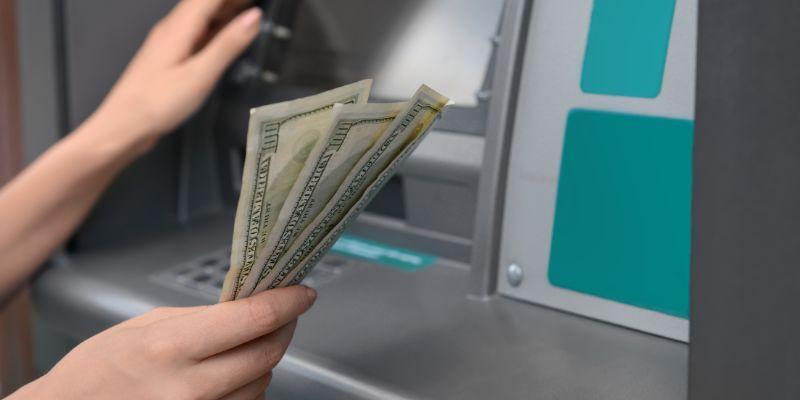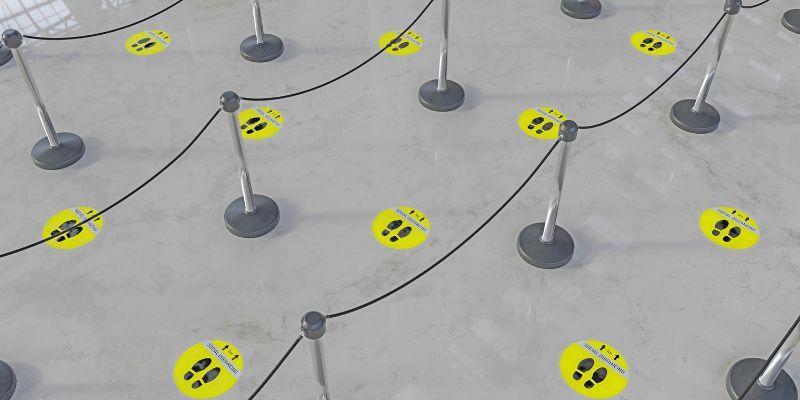Rail travel is essential to how people move around cities and countries. Ensuring a positive experience for passengers at train stations is crucial for encouraging more people to use rail services.
Learning how to improve rail passenger experience at train stations involves addressing several vital factors influencing passenger satisfaction.
These factors include accessibility, convenience, comfort, cleanliness, safety, security, information, communication, entertainment, and aesthetics. Focusing on these areas can make train stations more welcoming and enjoyable.
This article will explore ways to improve the rail passenger experience at train stations, making traveling more pleasant and efficient for all passengers.
Strategies to Improve Rail Passenger Experience at Train Stations
Improving the experience for rail passengers at train stations involves several significant strategies. Each strategy addresses different aspects of the passenger journey to ensure a more comfortable, convenient, and fun experience.
1. Reducing Wait Times
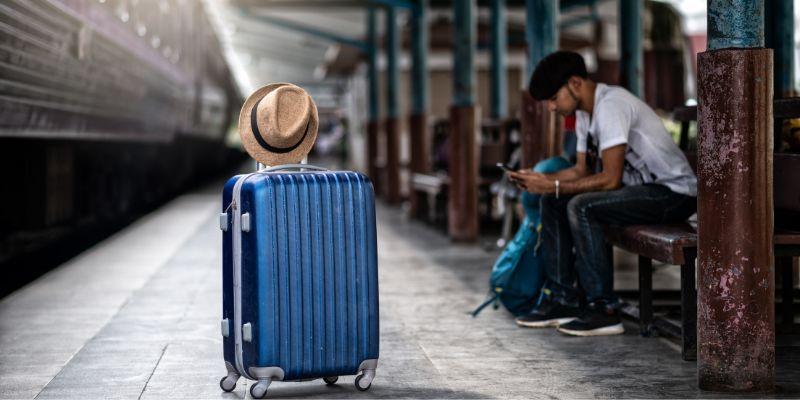
Minimizing wait times is crucial for improving the passenger experience. Efficient scheduling and real-time updates are vital strategies. By optimizing train schedules, gaps between arrivals and departures are reduced, decreasing the time passengers spend waiting on platforms.
Real-time digital displays and mobile apps provide up-to-date information on train arrivals, delays, and platform changes, which helps plan journeys more effectively.
This approach improves how to improve rail passenger experience at train stations by making travel more predictable and less stressful.
Streamlined boarding processes can further reduce wait times. Designated areas for different ticket classes and clear boarding instructions speed up the process and reduce congestion.
Optimized platform management ensures that platforms are adequately staffed and trains are dispatched efficiently, improving the rail passenger journey at train stations.
- Implementing automated ticket gates to speed up entry and exit
- Using predictive analytics to manage crowd levels
2. Enhancing Information Accessibility
Clear and accessible information is essential for improving the passenger experience. Prominent signage and wayfinding systems help passengers navigate the station quickly.
Signs should be easy to read, with intuitive icons and directions, addressing how to improve the rail passenger journey at train terminals.
Real-time digital displays and announcements inform passengers about schedules, delays, and platform changes.
Frequent and accurate updates provide passengers with confidence in their travel plans. Multi-language support is crucial for international travelers, ensuring all passengers can access necessary information.
Interactive kiosks and mobile apps offer personalized travel information and assistance, enhancing the rail passenger journey at train stations. Passengers can check schedules, purchase tickets, and receive updates, improving convenience.
3. Improving Station Amenities
Developing station amenities is vital for improving the passenger experience. Comfortable seating areas are essential for passengers waiting for their trains.
Providing ample, well-designed seating can make waiting more pleasant and reduce discomfort. Clean and well-maintained restrooms are crucial for passenger satisfaction, ensuring hygiene and convenience.
The availability of food and beverage options improves the station environment. Passengers appreciate having access to various dining choices, from quick snacks to full meals.
This not only caters to different tastes but also improves the overall atmosphere of the station.
These improvements address improving the rail passenger experience at train stations by making the environment more comfortable and accommodating. The following actions can also be taken:
- Installing water fountains and vending machines for quick access to refreshments
- Creating designated quiet areas for relaxation and work
4. Implementing Self-Service Solutions
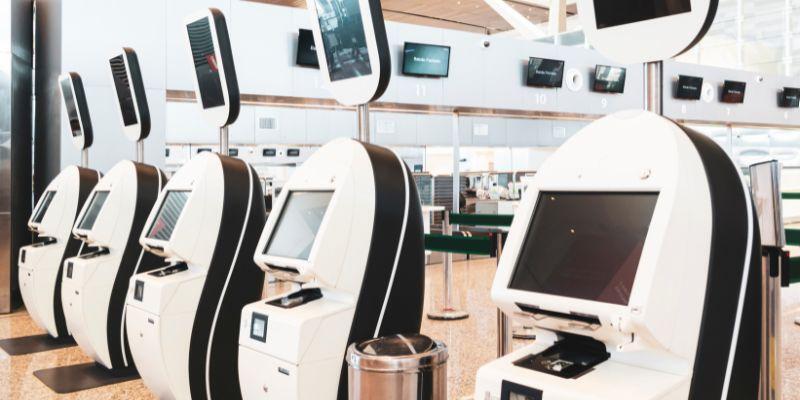
Self-service solutions can significantly augment the efficiency and convenience of train stations. Self-service ticket kiosks allow passengers to purchase tickets quickly and easily, reducing wait times and congestion at ticket counters.
Mobile ticketing and contactless payments offer additional convenience, allowing passengers to buy tickets and pay for services using their smartphones or contactless cards. This approach aligns with improving the rail passenger experience at train stations by streamlining processes.
Automated information booths provide passengers with real-time information about train schedules, platform changes, and other inquiries without needing to wait for staff assistance. These solutions make the rail passenger journey at train stations smoother and more efficient.
5. Ensuring Safety and Security
Safety and security are paramount for a positive rail passenger experience. Adequate lighting and surveillance throughout the station ensure that all areas are well-lit and monitored, deterring crime and enhancing passenger confidence.
Visible and approachable security personnel are essential. Their presence reassures passengers and allows for quick response to incidents, significantly improving the rail passenger experience at train stations.
Emergency response systems and procedures must be communicated and easily accessible. Stations should have well-marked emergency exits, help points, and first aid stations. Regular drills and staff training ensure that employees and passengers know what to do in an emergency.
These measures boost the rail passenger journey at train stations by creating a secure environment.
6. Enhancing Accessibility
It is crucial to make train stations accessible to all passengers. Facilities for passengers with disabilities, such as ramps, elevators, and tactile paving, ensure everyone can navigate the station comfortably.
Step-free access to platforms and trains is essential for passengers with mobility impairments, parents with strollers, and travelers with heavy luggage. This strategy addresses how to improve the rail passenger journey at train terminals.
Assistance services for elderly and disabled passengers, such as designated seating areas, accessible ticket counters, and trained staff to help with boarding and alighting, make travel more accessible and inclusive.
7. Improving Station Environment
Creating a clean and welcoming station environment is essential for a positive passenger experience. Ensuring the cleanliness and maintenance of station premises is crucial.
Regular cleaning schedules and quick responses to maintenance issues keep the station in top condition, enhancing passenger comfort.
Green spaces and aesthetically pleasing designs, such as gardens, artwork, and well-designed seating areas, create a relaxing and enjoyable atmosphere.
These elements address improving the rail passenger experience at train stations by making the environment more inviting.
Noise reduction measures, such as soundproofing materials and designated quiet areas, can significantly improve the station experience. Reducing ambient noise levels helps create a more peaceful environment, allowing passengers to relax or work while waiting for their trains.
8. Offering Additional Services
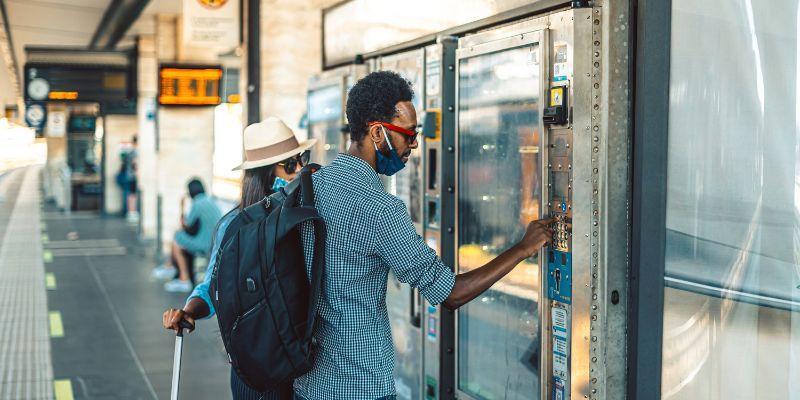
Providing additional services can significantly improve the passenger experience at train stations. Luggage storage and handling services allow passengers to securely store their belongings, making exploring the station or surrounding areas easier without heavy bags.
Wi-Fi and charging stations are essential for modern travelers who rely on their electronic devices for communication and entertainment, contributing to improved rail passenger experience at train stations.
Retail and service outlets within the station, such as convenience stores, cafes, and bookstores, offer passengers a variety of shopping and dining options.
These services enhance the station environment and provide added convenience for travelers, improving the overall rail passenger journey at train stations.
9. Collecting and Utilizing Passenger Feedback
Collecting and utilizing passenger feedback is essential for continuous improvement. Regular surveys and feedback forms allow passengers to share their experiences and suggestions.
This data is invaluable for identifying areas for improvement and understanding what passengers value most. By analyzing feedback, rail operators can make informed decisions about improving the rail passenger experience at train stations.
Engaging with passengers through social media and other platforms is also beneficial. It provides a direct line of communication where passengers can express their concerns and receive timely responses.
This interaction helps build community and trust, showing passengers that their opinions matter.
10. Promoting Sustainability
Promoting sustainability is an essential aspect of modern train stations. Implementing energy-efficient facilities and practices, such as LED lighting and renewable energy sources, can reduce the station’s carbon footprint.
Encouraging eco-friendly transport options, like bike-sharing programs and electric vehicle charging stations, promotes green travel and complements improving rail passenger experience at train stations.
Waste reduction and recycling programs are crucial for maintaining a clean, eco-friendly station environment. Providing marked recycling bins and reducing single-use plastics can make a significant impact. These efforts help the environment and appeal to environmentally conscious passengers.
How To Improve Train Passenger Experience – FAQ’s
How can I purchase tickets quickly and efficiently?
You can purchase tickets quickly using self-service station kiosks or mobile ticketing apps. These options reduce wait times and provide a convenient way to buy tickets.
How can I provide feedback on my experience at the train station?
You can provide feedback by filling out surveys, which are available at the station or online. Many stations also have feedback forms and suggestion boxes; you can engage through social media platforms.
How can I find real-time updates on train schedules?
Real-time updates on train schedules are available through digital displays at the station, mobile apps, and the station’s website. These sources provide the latest information on arrivals, departures, and delays.
Can I use contactless payment methods at self-service kiosks?
Yes, most self-service kiosks at train stations support contactless payment methods, including credit/debit cards and mobile payment options, for a quick and seamless transaction.
Conclusion
Improving the rail passenger experience at train stations is vital for encouraging more people to use rail services and enhancing overall satisfaction.
Strategies such as reducing wait times, enhancing information accessibility, improving station amenities, and ensuring safety and security can make stations more welcoming and efficient.
Additionally, implementing self-service solutions, enhancing accessibility, improving the station environment, offering additional services, collecting and utilizing passenger feedback, and promoting sustainability are all crucial steps.
Each strategy addresses different aspects of the passenger journey, ensuring that all needs are met and that travel is more convenient and enjoyable.
Together, these efforts will significantly enhance your efforts to improve rail passenger experience at train stations, making the journey more pleasant and efficient for everyone involved.
BOOK A FREE DEMO

